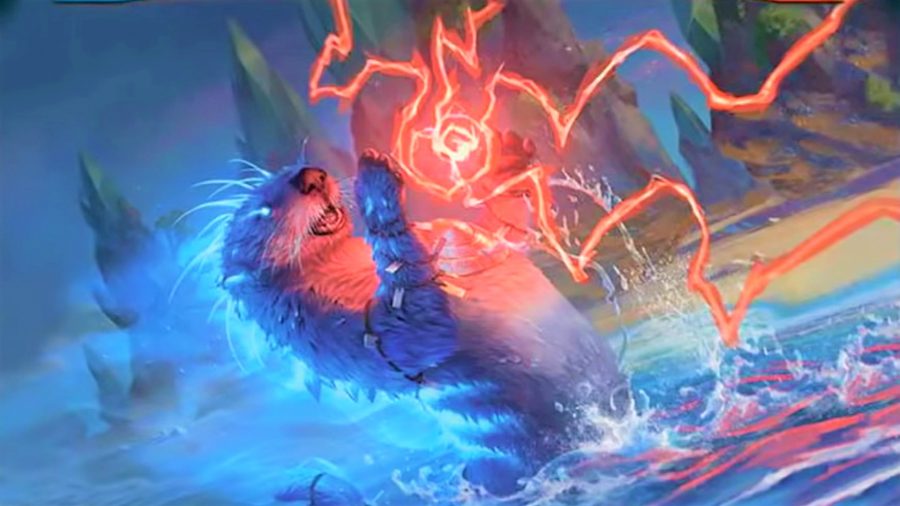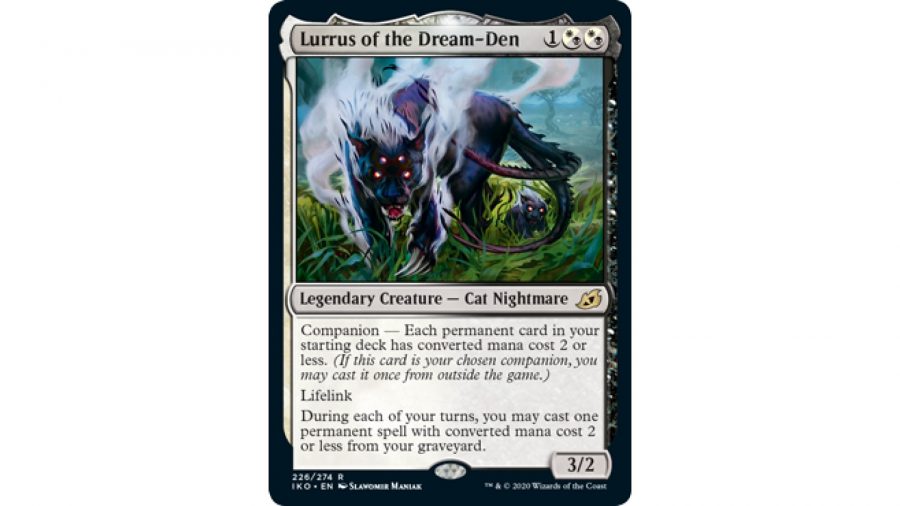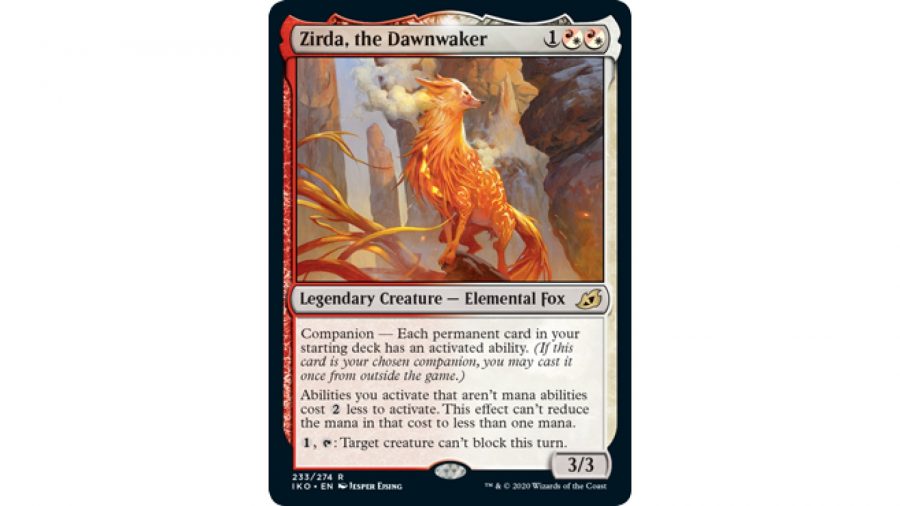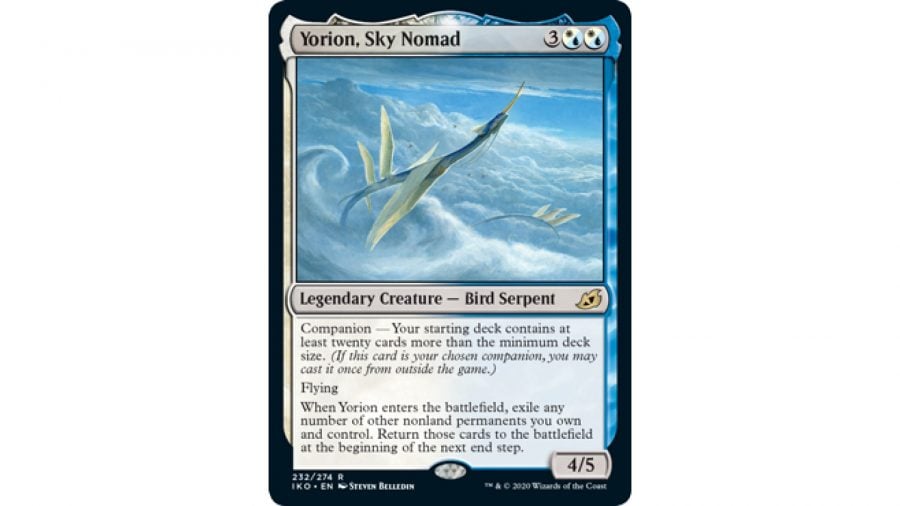In MTG, Companion is a keyword that allows you to put a specific card from outside the game into your hand, for three mana, as long as you build your deck to fit particular requirements. It’s also one of the most controversial Magic: The Gathering mechanics ever devised.
MTG’s Companion mechanic was introduced in the Ikoria set in 2020. A plane teeming with enormous monsters, where human bonders relied on their pet creatures to survive, Ikoria is best described as Pokémon meets Godzilla. Wizards of the Coast was seeking a way to showcase this relationship between man and beast through gameplay when it came up with the Companion keyword.
Unfortunately, it seems like Wizards of the Coast dramatically underestimated how powerful the Companion ability would be, and the entire mechanic had to be nerfed after the cards featuring it were released. (Even after this, the best Companion cards remained dominant across multiple formats, and some were eventually banned.) In this guide we’ll explain exactly how MTG Companions work, and take a look at some of the best Companion cards you can play.

How does the Companion keyword work?
There are only 10 Companion cards in total, each one created for Ikoria. Each is a legendary creature that can be put into your hand from your sideboard provided you build your deck in the correct way.
When deckbuilding, you can select one card with the Companion keyword to be your deck’s Companion. Each Companion card specifies a deckbuilding rule you must follow in order to use it as your Companion. This can range from only having cards with an even mana cost (Gyruda, Doom of Depths) to having extra cards in your deck (Yorion, Sky Nomad).
It’s important to remember that, even though each Companion card states you can cast it from outside the game, this is not /actually/ the case. Instead, you first have to pay three mana (any colour will do) to move it from your sideboard to your hand – and then you can cast it as normal.
Big deck energy: How to build a Commander deck
Originally, Companion cards could be played right from the sideboard, but this was deemed too powerful pretty early on, and the rules were updated a couple of months after Ikoria came out. That’s the reason for the discrepancy.
It’s worth noting that, just because a card has the Companion ability, doesn’t mean it can’t be played as a regular creature in your deck, or indeed as your commander. You can also have a Companion for your deck and still maindeck multiple copies of the same card.

The best MTG Companion cards?

Lurrus of the Dream Den
Nightmare by card type, nightmare by nature, Lurrus of the Dream Den’s ability to bring permanents back from the grave has proven exceptionally powerful. As with all MTG Companions, while the ability may not appear mind-blowing on its own, it’s the ability to fire it off consistently that really causes trouble.
Get outta here: The MTG banlist
Lurrus’s deckbuilding restriction, requiring you to only use low-mana cards, was hardly an obstacle across many formats. As a result, Lurrus was banned in Modern, Pioneer, Legacy, and even the super high-powered Vintage format.

Zirda, the Dawnwaker
The ability to reduce the cost of abilities gives Zirda, the Dawnwaker a lot of fun tricks. You can generate infinite mana, ping opponents to death, and use all sorts of instant win conditions. Being able to do this consistently isn’t so fun though, and Zirda soon got banned in Legacy.

Yorion, Sky Nomad
The Companion cost for Yorion is deceptively harsh – adding extra cards to your starting deck actually hurts quite a lot, reducing your deck’s consistency by a long way. But you know what helps make up for high variance? That’s right, a Companion card you can play in every single game.
Source: Wargamer




